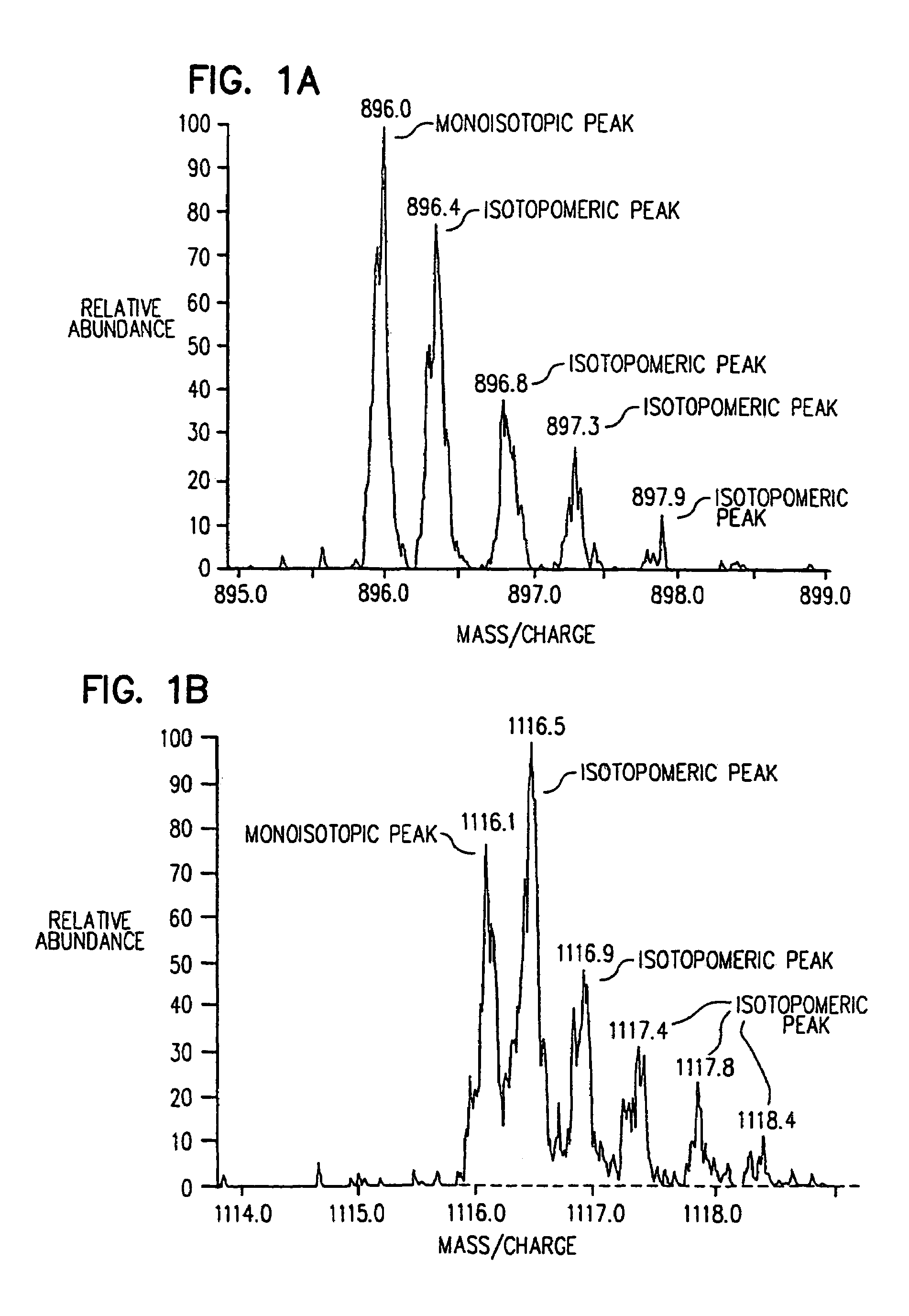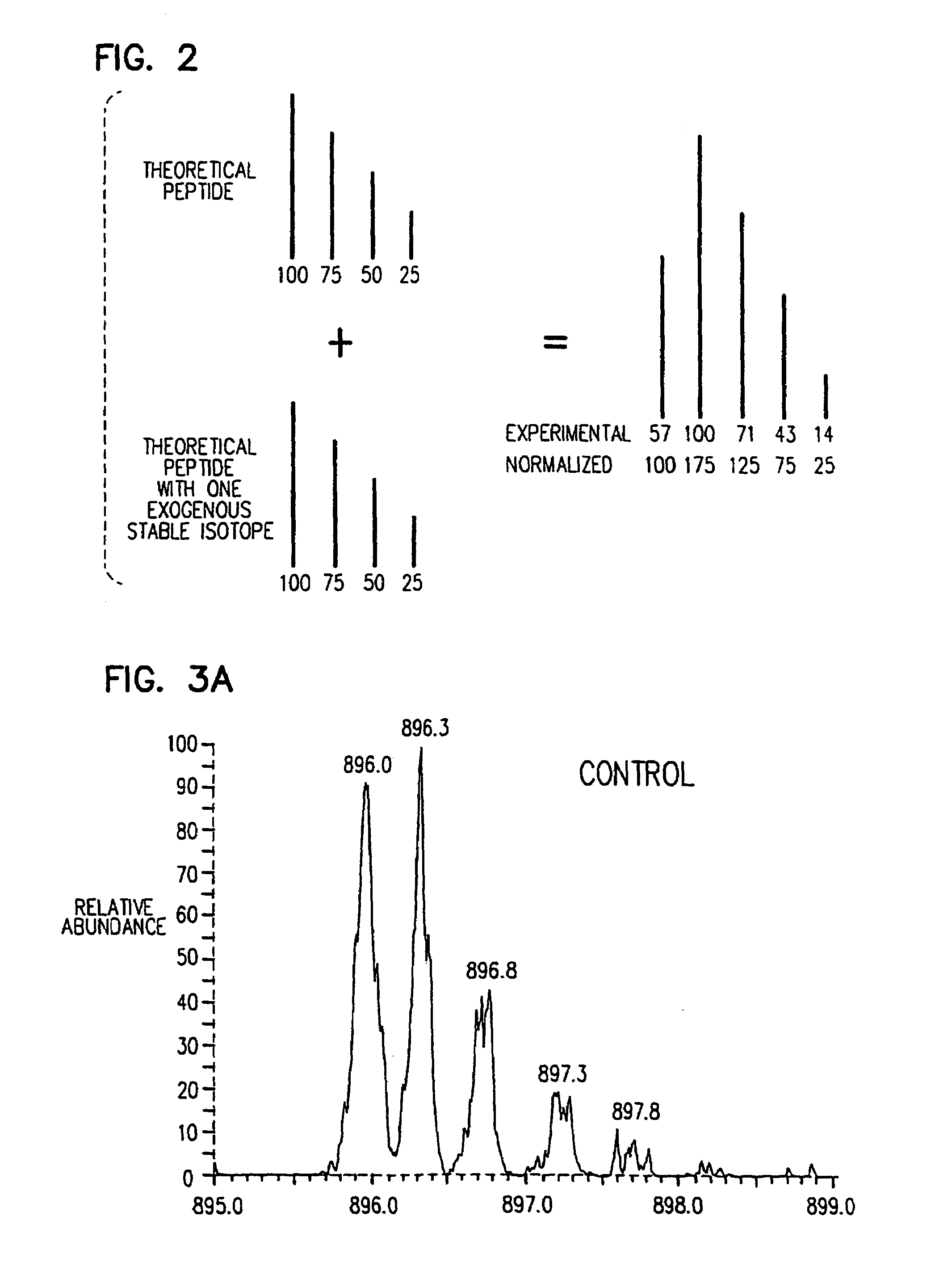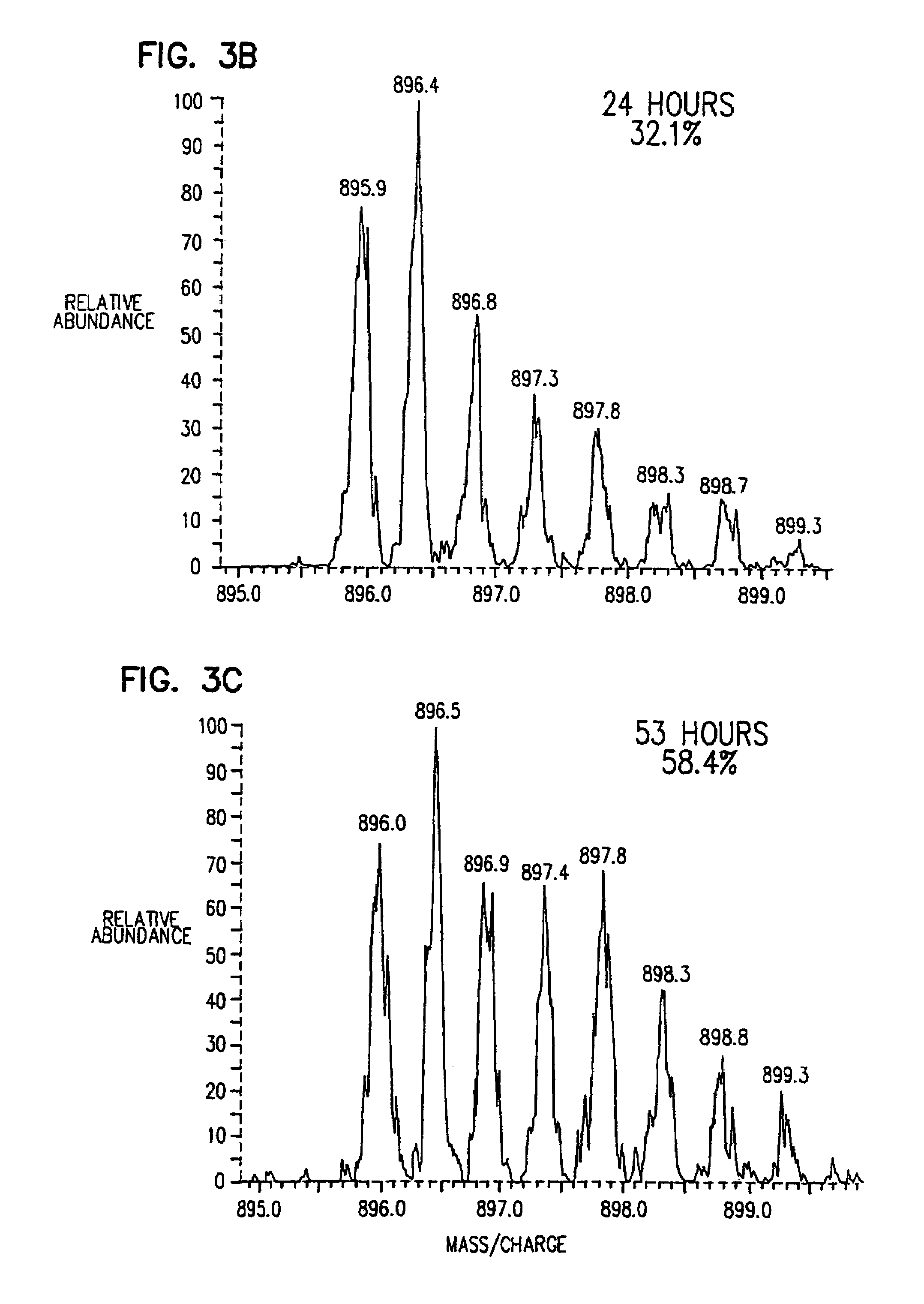Stable isotope metabolic labeling for analysis of biopolymers
a biopolymer and metabolic labeling technology, applied in the field of stable isotope metabolic labeling for biopolymer analysis, can solve the problems of limited use of radioactive probes, laborious and time-consuming amino acid derivatization and quality control procedures, and achieve the effect of increasing the size of the databas
- Summary
- Abstract
- Description
- Claims
- Application Information
AI Technical Summary
Benefits of technology
Problems solved by technology
Method used
Image
Examples
example
Measuring the Rate of Protein Synthesis Using Stable Isotope Labeled Amino Acids
[0090]The following example provides a description of the methods of the present invention for the measurement of the rate of protein synthesis. In one example, the rate of β-actin synthesis is determined in a mouse T cell line which has been stimulated to proliferate.
A. T-Cell Line Culture
[0091]Prior to beginning a labeling experiment and during the log growth phase, a mixture of proliferating T cells and irradiated Antigen Presenting Cells (APCs) were harvested into 50 ml polypropylene tubes. Any cells remaining stuck to the bottom of the tissue culture flask were removed by treating the cells with 0.5 M % EDTA in sterile saline for approximately 3 to 5 min. These cells were pooled with the cells in suspension and centrifuged at 150 xg for 6 min. After discarding the supernatant, the cells were reconstituted in leucine and isoleucine-free RPMI 1640 supplemented with 2 mM L-glutamine, 0.01 M HEPES, 1 mM...
PUM
| Property | Measurement | Unit |
|---|---|---|
| time | aaaaa | aaaaa |
| pH | aaaaa | aaaaa |
| pH | aaaaa | aaaaa |
Abstract
Description
Claims
Application Information
 Login to View More
Login to View More - R&D
- Intellectual Property
- Life Sciences
- Materials
- Tech Scout
- Unparalleled Data Quality
- Higher Quality Content
- 60% Fewer Hallucinations
Browse by: Latest US Patents, China's latest patents, Technical Efficacy Thesaurus, Application Domain, Technology Topic, Popular Technical Reports.
© 2025 PatSnap. All rights reserved.Legal|Privacy policy|Modern Slavery Act Transparency Statement|Sitemap|About US| Contact US: help@patsnap.com



